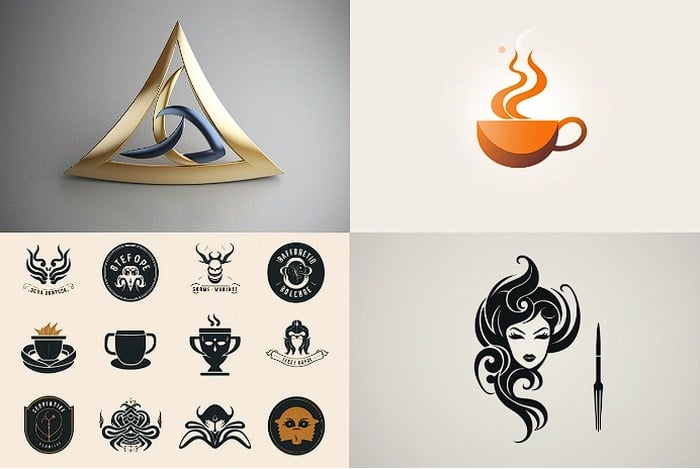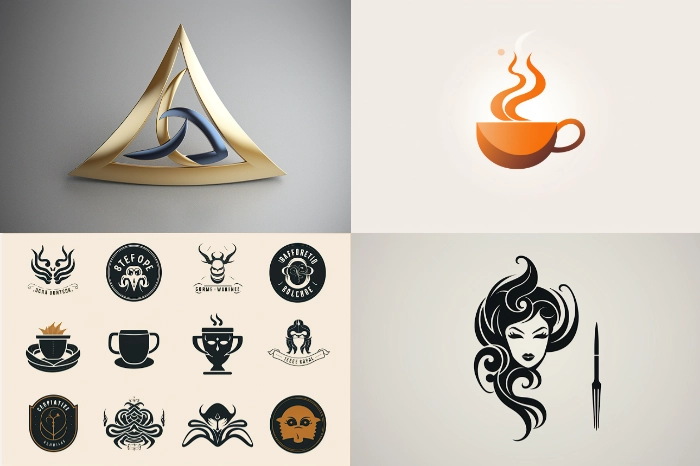In our ever evolving world a logo is more than just a graphical element; it’s the visual cornerstone of your brand’s identity. A well-designed logo serves as an instant reminder of a company or product, encapsulating the essence of your brand in a simple yet powerful mark. It sets the tone for all interactions and communications, from your website and marketing materials to packaging and customer service.
The significance of logos has evolved dramatically, fueled by cultural, technological, and social factors. In today’s saturated media landscape, logos have become deeply ingrained in public consciousness through constant exposure in advertising, product placement, and word of mouth. Brands like Apple, Nike, and Coca-Cola serve as prime examples of how logos can achieve almost iconic status. This is further amplified in a globalized world, where logos act as a universal language, transcending linguistic and cultural barriers to become instantly recognizable symbols.
Logos serve multiple roles: they distinguish you from competitors, provide a cohesive branding foundation, and offer a visual shorthand that makes your brand easily recognizable. A logo is often the first thing people see related to your business, so it needs to make a strong impression.
DallE 3 logo design made easy
The process of creating a logo was once far from straightforward and you would need to consider employing professional designers to be able to offer different options to choose from. thanks to the availability of AI tools such as Midjourney and now OpenAI’s DallE 3. With a little consideration in writing the perfect prompt the DallE 3 you can now generate a wealth of ideas and logos to choose from whatever your business or brand may require.
Watch the video below to learn how easy it is using DallE 3 and how it compares to Midjourney which still struggles with the implementation of text in its AI art. Although you can expect the development team at Midjourney to roll out a new update in the near future to improve this.
Why logos are important
- Identity & Recognition: A logo serves as the face of a company, often being the first point of contact for potential customers. It establishes the brand’s identity and makes it recognizable.
- Consistency: In various touchpoints—be it business cards, websites, or packaging—a logo provides a consistent visual element that helps in cohesive branding.
- Trust & Credibility: A professionally designed logo can convey a sense of professionalism and competence that builds trust among consumers.
- Differentiation: In crowded marketplaces, a unique logo helps to differentiate your brand from competitors, providing a competitive edge.
- Emotional Connection: Over time, a logo can develop an emotional resonance with consumers. They associate the logo with experiences, making them more likely to return to the brand.
- Simplification: Logos can condense a brand’s complex identity, mission, and products into a single, easily digestible symbol, aiding in quick decision-making for consumers.
Learn how to designing logos business
Previous articles we have written that you might be interested in on the subject of logo design and AI art :
Things to consider when designing your logo
In the following sections, we’ll delve into each of these critical areas in more detail, equipping you with the knowledge to create or commission a logo that not only stands out but also stands the test of time.
Target Audience
- What to Consider: Know the demographics, psychographics, and buying behavior of your audience.
- Why It Matters: A logo for a Gen Z audience might embrace modern, bold designs, while one for a more mature audience may require a more classic, subdued style.
Brand Identity
- What to Consider: Identify your brand’s core values, mission, and personality.
- Why It Matters: A logo for a tech startup might opt for a sleek, minimalistic design, while a toy store might go for something colorful and playful.
Simplicity
- What to Consider: Aim for a clean, straightforward design that captures attention.
- Why It Matters: Overly complicated logos can be difficult to reproduce and are often forgettable.
Scalability
- What to Consider: Test how your logo looks at different sizes and formats.
- Why It Matters: Your logo needs to be recognizable whether it’s on a large billboard or a small mobile app icon.
Color and Typography
- What to Consider: Study color psychology and typography rules to make informed choices.
- Why It Matters: The right color can evoke the intended emotion from the audience, and the typography can support or detract from this.
Versatility
- What to Consider: Test the logo in different scenarios, like print, online, and merchandise.
- Why It Matters: A versatile logo can be adapted for various platforms without losing its impact or requiring significant redesign.
Originality
- What to Consider: Conduct a thorough market and legal research to ensure originality.
- Why It Matters: An original logo avoids legal complications and also helps in creating a distinct brand identity.
Professional Help
- What to Consider: Evaluate whether you have the design skills and software to DIY or if professional help is needed.
- Why It Matters: A well-designed logo by a professional can make a significant difference in how the brand is perceived and can save time in the long run.
Feedback Loop
- What to Consider: Get input from various stakeholders, including potential customers, team members, and experts in the field.
- Why It Matters: Different perspectives can reveal blind spots in the design or confirm that it resonates well with the target audience.
Timelessness
- What to Consider: Avoid overly trendy elements that will date quickly.
- Why It Matters: A timeless logo will continue to be effective and won’t require frequent redesigns.
What makes an amazing logo?
The advent of the digital age has provided logos with even more platforms for visibility, increasing their importance in brand strategy. Social media and digital marketing act as catalysts, enhancing the reach and impact of a brand’s visual identity.
This heightened visibility often leads to strong consumer loyalty, with logos serving as symbols of this affinity, so much so that they frequently appear on merchandise and even tattoos. Over time, certain logos become cultural or historical markers, representing not just a brand but a time, a movement, or a cause.
The emotional narratives that brands weave into their logos further elevate them from mere designs to iconic symbols. In the internet era, the potential for logos to become memes or go viral adds another layer to their cultural significance. Moreover, logos have found their way into social and political movements, symbolizing causes like breast cancer awareness with the pink ribbon, thereby becoming imprinted in societal consciousness.
Filed Under: Guides, Top News
Latest timeswonderful Deals
Disclosure: Some of our articles include affiliate links. If you buy something through one of these links, timeswonderful may earn an affiliate commission. Learn about our Disclosure Policy.


